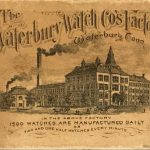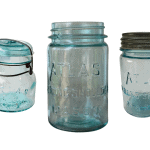The Waterbury Clock Company is a watch manufacturing company that was founded in 1857. It was a subsidiary of Benedict & Burnham, a manufacturer of brass sheeting and buttons, among other brass products.
By the 1840s, millions of brass clock movements were used by people, and they were also manufactured by various companies like Ansonia Clock Company, Seth Thomas, and Wm. L. Gilbert Clock Co.
Since the brass demand was so high, it was common for the brass manufacturer like Benedict & Burnham to grow their business by developing clock movements. Therefore, this made them control the entire supply chain from the raw materials to finished products.
They first entered the clock business through a joint venture with the clockmaker Chauncey Jerome, his son Samuel, and Benedict & Burnham’s directors from 1793 to 1868. The business was incorporated in 1850 and was given the name Jerome Manufacturing Company. It was established in New Haven, Connecticut, where the Jeromes used to manufacture clocks.
However, later on in 1853, the Jeromes went on to buy the Benedict & Burnham investors, and the company made a 21 percent profit over the initial invested capital. Benedict & Burnham went to start their own clock manufacturing company in Waterbury, Connecticut.
In 1855, they hired Noble Jerome, the younger son of Chauncey Jerome. They set up a plant to manufacture brass movement in a building just right next to the main brass manufacturing plant.
The Jerome Manufacturing Company went bankrupt in 1856. Benedict & Burnham offered Chauncey Jerome a lease on a certain building near the Waterbury Factory to make cases that would house Benedict & Burnham’s produced movements.
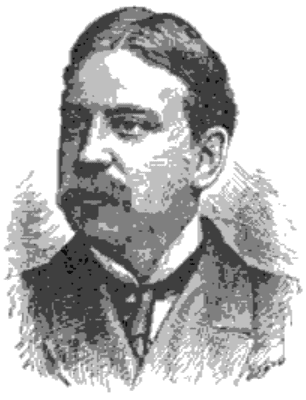
Wikimedia Commons
However, after just 8 months, Jerome left the case making the operation taken over by Edward Church, his foreman. On March 5th, 1857, the formal incorporation of the Waterbury Clock Company took place, and G.W Burnham, together with Aaron Benedict, became the largest shareholders, making them own over one-third of the 2,400 shares among them.
Many of the other shareholders were also part of the Benedict & Burnham Company. Noble Jerome was hired and made the chief foreman of movement production. However, there was a tragedy in 1861 as Noble Jerome died from an accident when a balustrade fell from a building that he was passing by.
He was later replaced by the son of Eli Terry, a popular clockmaker. After the end of the American Civil War, the Waterbury Clock Company developed two factories specifically for building clock cases. But misfortune struck them again as the factories were destroyed by fire, although it is something that used to happen a lot during that era.
The two factories were later rebuilt, and from that point, the business took off, with the first listing of their clock published in 1867. It was at a catalog distributed by a New York sales agency known as the American Clock Company, representing many other clock manufacturers.
From 1869 to June 1870, the business was booming, and the company manufactured 96,000 movements, 82,000 completed clocks, and 85,000 cases. The distribution of Waterbury Clocks happened by 1875 through sales offices in San Francisco and Chicago.
The Waterbury Company published its catalog in 1881 that was exclusively listed in clocks, and it offered 94 different varieties. The catalog expanded in 1891 up to 304 models and 175 pages. 1892 saw the company forming a subsidiary called the Waterbury Watch Company, and this new division started to produce inexpensive low-end pocket watches for the Ingersoll Company, with each selling for a dollar.
These watches were branded with the Ingersoll name, and they became quite profitable. From 1896 to 1916, they sold over 40 million of these watches at $1 each. By the turn of the century, the Waterbury company was closing around 600,000 watches and clocks monthly. They had a workforce of about 3,000 people.
During World War I, the United States Army made a contract with the Waterbury Watch Company to manufacture affordable wristwatches for the American soldiers. In 1918 after the end of the war, the watches started being bought by the American public. Unfortunately, in 1922 the Ingersoll Company went bankrupt, and the Waterbury Watch Company lost its best customer. In 1922, the Waterbury Watch Company bought the Ingersoll Company, but in 1931 they started to decline. In 1932, the Waterbury Clock Co. was placed in receivership, but some of the large shareholders saved the company through an investment of half a million dollars.
The Waterbury continued manufacturing watches and clocks, and today it’s known as the Timex Group USA, Inc. It became insolvent in 1944, but it was acquired by Timex Group B.V. and renamed the Timex Group USA. It currently has subsidiaries like the Opex S.A., Timex Canada, and Sequel AG.
Popular Waterbury Clocks
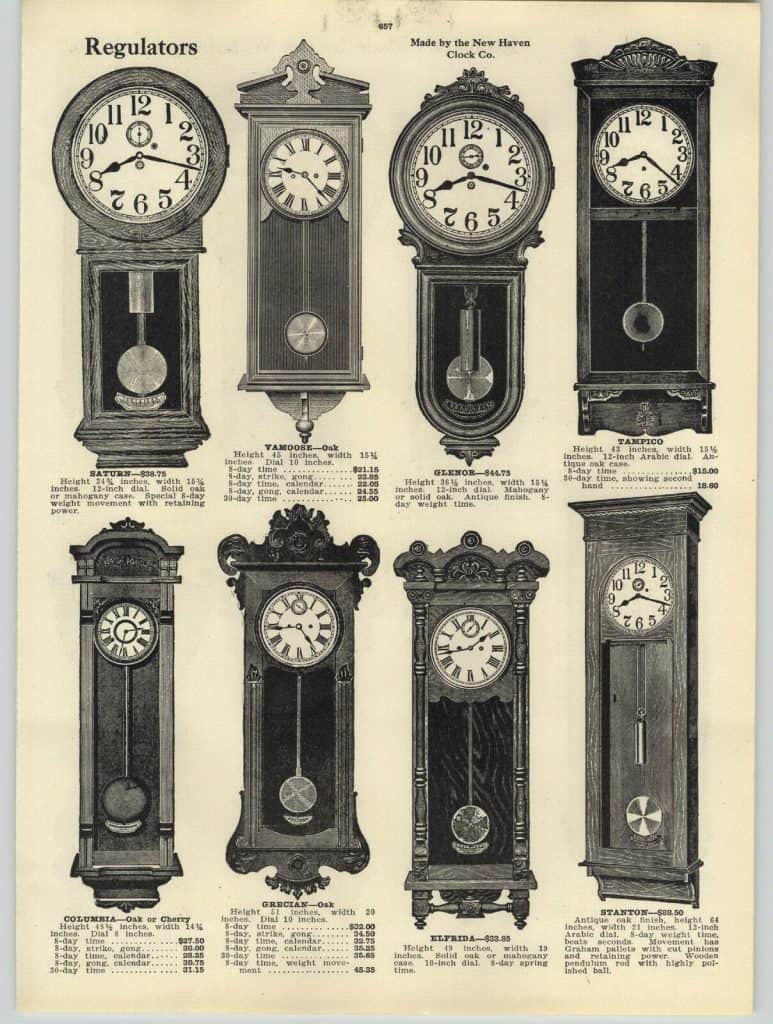
Image from Ebay
The Waterbury Clock Company manufactured many clocks and watches. In this section, I’ll discuss some of their popular clocks for you to check out.
1. The Mickey Mouse Watch
The Waterbury Clock Company has a fascinating history behind the Mickey Mouse watch. The surprising fact is that when the watch was created, no one thought that it could sell so well and even become one of their most popular watches.
The Mickey Mouse watch provided jobs to thousands of people in Waterbury, Connecticut, during the Great Depression. The history of the watch dates back to 1932, when the company was struggling.
An advertising man from Kansas City known as Herman “Kay” Kamen saved the Disney Company and the Waterbury Clock Company. Kamen suggested the idea of a Mickey Mouse watch to Walt Disney, who at the time thought that it won’t sell. On May 2nd, 1933, the first patent of the watch was submitted, and the first version was for boys priced at $3.25.
Ingersoll also made Mickey Mouse pocket watches, and both of them had a picture of Mickey right on the dial, his hands showing the hours and minutes. An included small dial at the bottom was used to count the seconds and 3 little Mickeys chasing one another.
During a certain promotion at Macy’s, 11,000 Mickey Mouse watches were sold in just a day. In two years, the company sold 2.5 million Mickey Mouse watches, and the workforce grew to 3,100 people from just 200 people.
By 1957, the company sold 25 million Mickey Mouse watches, but during that decade, they took the watch out of the market and started selling reliable and affordable watches called the Timex. However, in 1968 the watch was returned to the market, and it’s been sold by other companies ever since.
2. The Augusta Clock
The Augusta clock is one of the most widely sold clocks from the Waterbury Clock Company. The watch was created in 1893, which makes it an antique Waterbury clock, although there are only a few of them in circulation. The Augusta clock was large with an open swing and had 2 dragons at the top part.
3. The Wrigley Regulator
This is one of the most interesting Waterbury clocks on the market. It was created in 1900, mainly for the Wm. Wrigley Jr. & Co. The Wrigley family is famously known for their chewing gums, and the relationship between these two companies ensured that Waterbury Clock Company designed a watch in their name.
The Wrigley Regulator watches had an oak case finishing, with a 31-day month just outside the face, with a paper label in the internal case. Surprisingly, this model is currently not available in Waterbury’s catalog, which indicates that it was specifically manufactured for the family. Later on, it was designed for the masses.
4. The Waterbury Cat Watch
The Waterbury Cat, as it’s popularly known, is one of the many models that were created in a unique shape. The company made a ship’s bell, sunflower, music men, and banjo, among many others.
There’s a face to the cat and a tail pendulum. The watch was launched in 1935 and is quite rare today, which means you find one, you’ll be lucky. It is an amazing watch with excellent features, design, and affordability. It is one of the many reasons many people bought it back in the 20th century. It’s also one of the popular watches by the Waterbury Clock Company.
How to Identify a Waterbury Clock
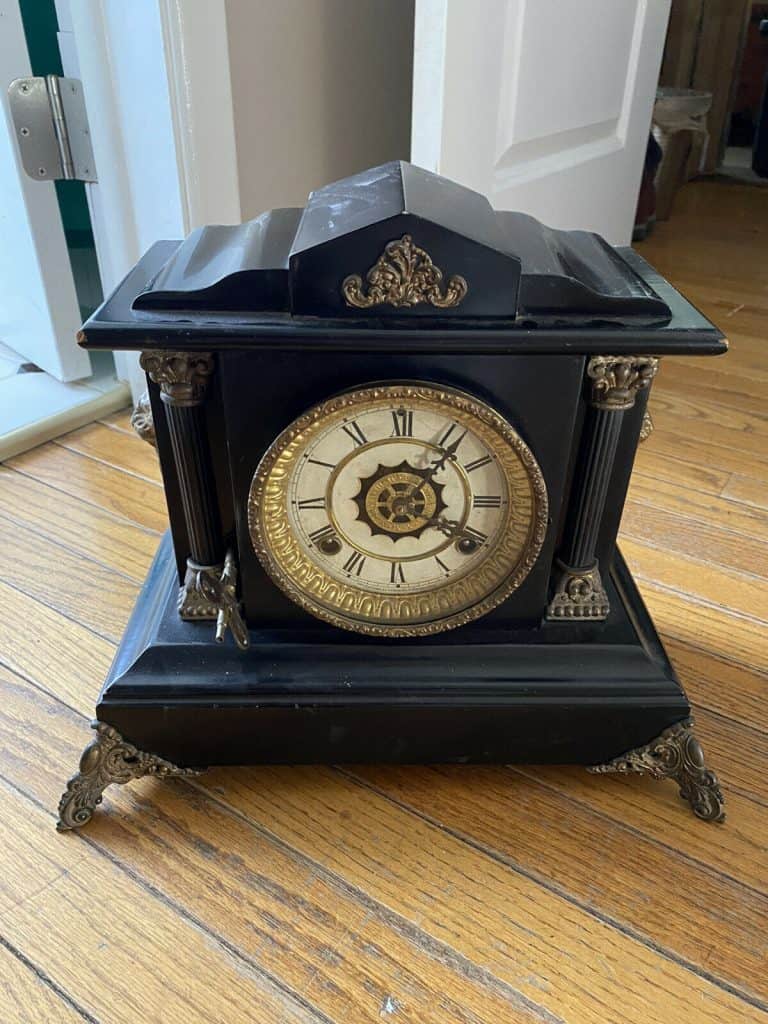
Image from Ebay
When it comes to the Waterbury clock identification, there are various distinct features that the watch comes with.
Trademark
The trademark of a brand is one of the most crucial things you need to check when buying a product. All Waterbury watches have a trademark of its name, “The Waterbury Co.”
You can find the trademark well engraved or just printed on the dial face of the watch. When buying the watch, you can also find it on the paper label or on the back of the watch, or even inside the clock’s case.
Style
It’s not easy to identify watches made by the Waterbury Clock Company just by their style, but the most guaranteed fact is that they are normally made of walnut or oak. You should also note that all the faces of these watches display Roman numerals instead of digits.
The good news is that the company has strived to ensure that all their clocks are keeping up with the current trends and fashions. There are several styles that Waterbury clocks have been designed with, and they include Art Deco, Victorian Revival, Mission, and Art Nouveau. Some of them are wall clocks, and others are just free-standing watches.
Characteristics
The characteristics of watches from different brands also make them stand out from each other. Therefore, when you want to buy a watch that has been designed by your favorite brand, you first need to identify some of its unique characteristics.
For most Waterbury watches, they are designed with wood. Only a few of the clocks were made with black finishing, while a few others were also made with white finishing. Some of the watches also come with an enamel finish, while others come with porcelain.
All of the clock movements from Waterbury are properly engraved or even stamped with the name of the manufacturer, the date, and a patent marking from the Waterbury Clock Company. To make you know them well, the movements should have rounded corners and with brass. If the movements are designed with steel, it is supposed to be plated with brass.
Therefore, you need to keep an eye on these features and characteristics to ensure that you are purchasing clocks or watches made by the Waterbury Clock Company.
How Much Do Waterbury Clocks Cost?
Most clocks made by the Waterbury Clock Company are highly in demand, and this makes them quite costly. An antique Waterbury wall clock that is in perfect condition is sold at $800 and above.
However, some clocks can sell from around $30 and above. These include small and brass alarm clocks. Therefore, if you are searching for an original Waterbury clock, you need to search properly to ensure that you get the perfect watch and don’t end up with the wrong one.
You can find a reliable and genuine seller on the market. However, you need to conduct thorough research to ensure you buy the original Waterbury clock.
How to Buy Vintage Watches
When it comes to buying a vintage watch such as the ones designed by Waterbury from way back in the early 1900s, you need to first learn how best to do it to avoid being duped. Here, we’ll share some essential tips to help you purchase the right watch without being disappointed later on. Knowledge is power, and it can significantly help you avoid ending up in regrets later on after buying your vintage watch. Therefore, check out these tips below.
1. Be Well Informed
The first thing you need to ensure is that you are well informed before going on to buy a vintage watch. The vintage market is full of fake sellers and watches, and that means staying informed will help you avoid such issues. It is highly recommended to conduct a thorough research first and get more information from collectors – if you’re not a collector yourself.
You can also try to seek advice online by posting photos and seeing what people will respond to. There are many places where you can get resourceful information on the web. Therefore, take advantage of these kinds of things to help you make the right decision when it’s time to buy your vintage watch.
2. Analyze the Watch
When buying any product, it is crucial to first analyze it and get hands-on in the process to ensure you don’t buy a fake one. There is a huge difference between a vintage watch and an ordinary one. Therefore, you need to first understand that before embarking on the journey to buying your ideal antique watch from your favorite brand.
You can check whether some of the features match each other. For instance, the lume on the watch’s dial should match its hands. If they don’t match, then it’s a clear indication that either one of them has been replaced. You also need to check the edges of the watch to ensure they are in good condition and smooth. Every watch you buy should have its original finish, even if it happens to have scratches.
3. Serial Number
The serial number of a watch helps you find out its age. Therefore, this is also another crucial thing that you need to check when buying a vintage watch. You also need to ensure that the number of the movement aligns with the vintage’s case.
Conclusion
The Waterbury Clock Company is one of the most popular and reputable watch companies worldwide. Their watches are not only reliable but also quite efficient and affordable. The company has been around for a long time, and you can never go wrong buying any one of their watches.

